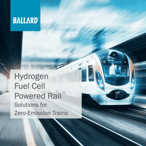In the mid-20th Century, steam engines virtually disappeared from North America’s railways overnight. They were replaced by the more efficient diesel-powered locomotives.
Why? North America was experiencing a post-war expansion, and rail transportation was essential to economic prosperity. Diesel-powered locomotives could run faster and work longer than their steam-powered predecessors. They were easier to maintain and required smaller crews.
Now, the 21st Century is being shaped by forces bigger than the economy: the need to reduce the impacts of climate change. Fossil fuels are being phased out and the second revolution—zero-emission rail power, and specifically, hydrogen trains—is underway.
The rail industry’s competitor, trucking, is already planning their zero-emission future
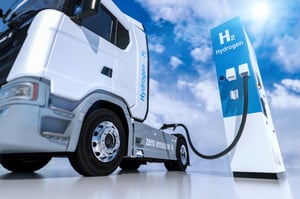
There are so many compelling reasons to innovate and improve. One reason that is often overlooked is the current state of competitive sectors. Trucking, marine, and public transit are already transitioning to zero-emission technologies.
If the rail industry wants to defend itself against “greener” trucking moving freight, it must respond. The good news is, some in the rail industry are already taking steps to replace their diesel powered locomotives.
GHG emissions from trains are a key target for carbon reduction programs
Greenhouse gas emissions from trains are highly visible to the public. Rail lines weave through cities and along roadways. Switching yards are often located near city centers. The GHG emissions from diesel-powered trains are arguably worse than those emitted by diesel-powered freight trucks. In fact, the sulphur dioxide (SO2) emissions from diesel train engines are relatively higher than from on-road diesel engines.
It’s important for industry leaders to demonstrate a commitment to solving climate issues. The public demands it.
Canadian Pacific recognizes the GHG problem
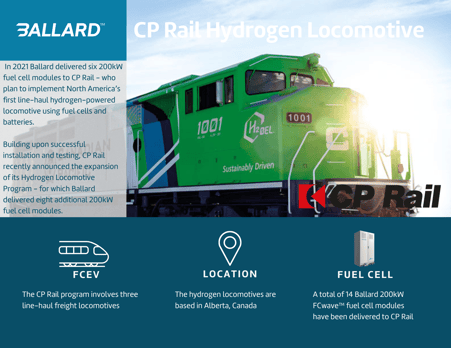
Canadian Pacific (CP), a North American leader in rail transportation, announced its zero-emission pilot project and stated the problem clearly: “Nearly the entire North American freight locomotive fleet... consists of diesel-powered units, representing the industry's most significant source of greenhouse gas emissions.” It’s time for others in the industry to respond in kind.
The solution: Hydrogen fuel cell power for electric locomotives
To replace diesel, the rail industry needs a zero-emission solution that can deliver the same power, range, reliability—and cost effectiveness—as legacy diesel technology. The issue is being confronted in many jurisdictions globally.
That solution is hydrogen fuel cells.
- Fuel cells are low maintenance - there are no moving parts and fuel cells have plug-in modularity: powerful 200kW units can simply be swapped out when required.
- Fuel cells are truly zero emission - unlike, for example, LNG. Why convert from diesel to another fossil fuel, when it’s possible to achieve full decarbonization with hydrogen?
- Hydrogen refueling is quick - a fuel cell electric multiple unit passenger train can run for 18+ hours after less than 20 minutes of refueling. Compare that to many hours of downtime to recharge a battery-powered electric train.
- Fuel cells’ range is longer - hydrogen fuel cell trains have a long range of up to 1000 kilometers between refueling—ten times farther than battery-powered electric trains. Centralized hydrogen refueling stations only need to be within 1000 kilometers of each other.
- Fuel cell locomotives can be deployed anywhere (with no catenary) - fuel cell locomotives can easily take over the service routes of diesel locomotives. Their range is comparable and there is no need for the costly electrical infrastructure of catenary trains.
- Fuel cell power can be retrofitted into existing locomotives - Ballard FCmove™ heavy-duty fuel cell modules are available in plug-in 200kW modules that are ideal for retrofitting.
Converting to fuel cell trains is cost effective
System-wide, converting to fuel cells is far more cost effective than zero-emission alternatives such as electrifying train lines with overhead catenary wires.
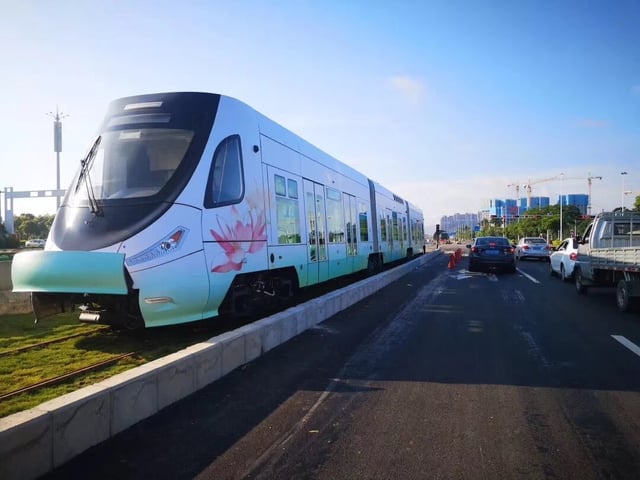 Ballard Hydrogen Fuel Cell Tram, Foshan, Guangdong Province, China
Ballard Hydrogen Fuel Cell Tram, Foshan, Guangdong Province, China
Catenary wiring is enormously expensive, and with so many railway segments across the US, with various owners and operators, a coordinated conversion is unlikely. When considering catenary wiring, keep in mind that:
- The electrical infrastructure has to be built - currently less than 1 percent of U.S. railroad tracks are electrified, while other regions with electrical rail systems still have significant portions of their network running on diesel.
- Installation costs are high - light rail catenary systems cost approximately $2.3M per route mile for double tracks with one set of catenary support.
- Each segment’s carrier has its own facilities and markets - nationwide, railway lines are privately owned. Therefore, coordinating a single compatible catenary system would be challenging.
For long routes, with low frequency of service, fuel cell locomotives are especially cost effective. (See Page 50 of the Hydrogen Council’s Path to Hydrogen report).
Hydrogen is safe
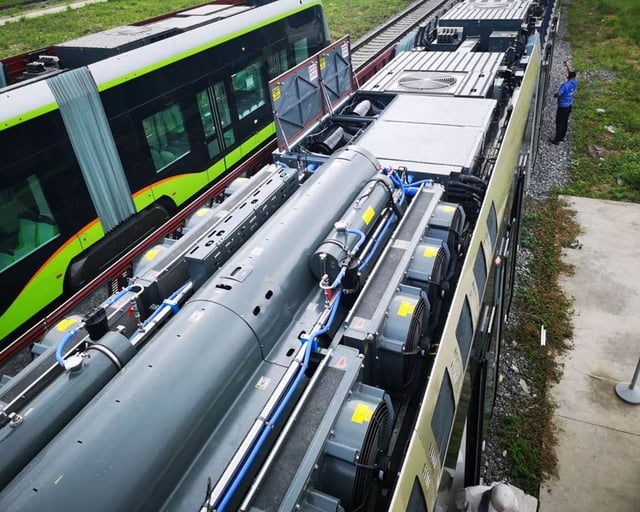
Some fear that a derailment or other incident could cause a hydrogen tank car to ignite. In fact, the danger of a hydrogen-related fire is low and management is well understood:
- Hydrogen disperses into the air. It does not pool. It does not create fireballs, and does not leave toxic spills to clean up, as happens with diesel fuel.
- A fire detection system terminates all fuel supply in the event that a fire is detected. This is typically sufficient to quench any hydrogen-related fire.
- In the event of a fire, the fuel cell modules are shut down, and the hybrid battery system takes over to keep the train powered.
- Fuel cell trains will comply with rail fire safety standards such as EN45545 and EN50553.
Funding and support are coming for hydrogen powered trains
As has been widely reported, the Biden administration’s $2 trillion infrastructure plan includes substantial funding for rail development, with a focus on passenger service and mass transit. In this plan (which is not yet approved) freight receives an indirect boost.
The administration also plans to enhance grant and loan programs that support passenger and freight rail safety, efficiency, and electrification. Other projects are aimed at alleviating freight congestion at ports and other choke points. These will help to address the capacity crisis that’s currently slowing down portions of the nation’s intermodal system.
In Europe, as part of the €100 billion Horizon Europe initiative, the rail industry has been targeted to receive research and innovation funding. The goal is to define, design and implement the full spectrum of rail research and innovation activities, from fundamental research to large-scale demos, to trigger a major transformation of the railway system to meet sustainability goals.
China plans to spend about US$205 billion in 2021 on seven “new infrastructure” sectors as part of its economic recovery from the Covid-19 pandemic. 59% of the funds are earmarked for rail and metro systems. This initiative is representative of the country’s move toward less carbon-intensive growth drivers. And in April of 2021, Weichai Power officially opened the National Fuel Cell Technology Innovation Center in Shandong. The Center will work with industry leading fuel cell technology, serving the strategic needs of the national fuel cell industry.
Ballard leads the industry in hydrogen power for rail
In technology and experience, Ballard leads the hydrogen fuel cell industry. For decades we have been applying fuel cells to heavy-duty motives, from transit buses to heavy-duty trucks to rail applications. For years we have been working with many of the rail industry’s leaders to help them transition to zero-emission fuel cells.
We are working on a number of passenger hydrogen trains in China and in Europe:
Fuel cell powered fixed rail electric trams in Foshan, China
The world’s first hydrogen-powered tram in Tangshan, China
Fuel cell engine to power Siemens’ Mireo light rail train
Scotland’s first fuel cell-powered passenger train
HydroFLEX hydrogen-powered train passenger train in the U.K.
For rail freight, we are currently working on important projects with CP and Sierra Northern Railway.
CP: Launching North America’s first hydrogen powered freight locomotive
We are working with CP, through its Hydrogen Locomotive Program, to develop the first hydrogen-powered line-haul freight locomotive. This will be a fuel-cell/battery retrofit of a diesel-powered locomotive. When the locomotive is operational, CP will run trials and qualification testing on the technology.
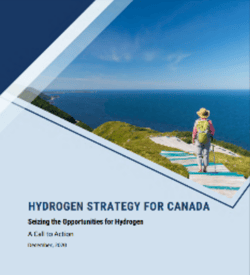
“Retrofitting locomotives and replacing diesel engines with zero-emission fuel cell engines is a viable and cost-effective alternative to purpose built hydrail trains, which is an important opportunity given the long (50 year-plus) life cycle of locomotives.” Canadian Hydrogen Strategy 2020.
As CP President and CEO Keith Creel said, “How we power our trains matters to our customers, employees, shareholders and to the communities we operate in. [Fuel cell] technology holds the possibility of eliminating emissions from freight train operations, which already represent the most efficient method of moving goods over land.”
Sierra Northern Railway: Introducing a zero-emission switching locomotive
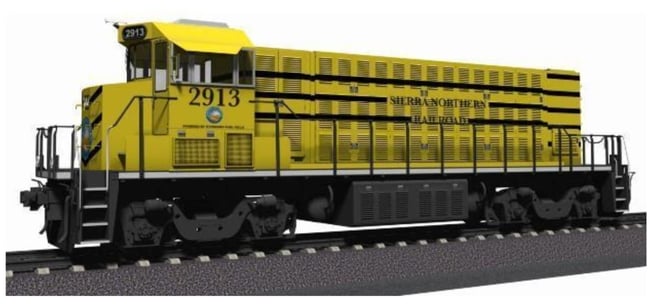
Sierra Northern Railway has a project underway for a fuel cell powered switching locomotive powered by a 200kW FCmove®-HD fuel cell module integrated with battery technology.
Kennan H. Beard III, President of Sierra Northern, sees a strong future for fuel cell locomotives. “We believe this project will help lead the switching locomotive industry to an emissions free pathway in all ports in the State of California.”
Moving forward: It’s time to forget about CNG and LNG
While some look to natural gas power, whether CNG or LNG, these are still fossil fuels, and they still emit significant GHGs. As the rail industry begins to invest in the future of our planet, it’s far better to focus these investments on true zero-emission fuel cell technology, fueled by blue and green hydrogen.
The pathway to zero-emission railroads—the Second Great North American Railroad Revolution—is clear, and hydrogen fuel cells are the solution to take us there.
Hydrogen Fuel Cell-Powered Rail: Solutions for Zero-Emission Trains
Read this brochure for a brief overview of fuel cell trains and their benefits, plus Ballard's experience with rail industry leaders in implementing fuel cell technology. No email required.










